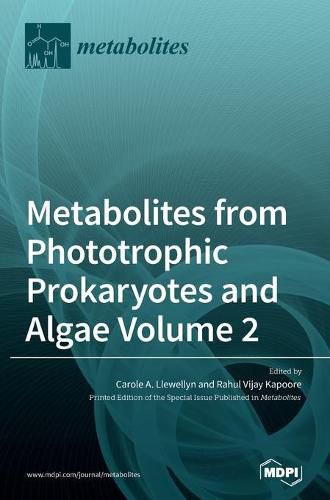Readings Newsletter
Become a Readings Member to make your shopping experience even easier.
Sign in or sign up for free!
You’re not far away from qualifying for FREE standard shipping within Australia
You’ve qualified for FREE standard shipping within Australia
The cart is loading…






This title is printed to order. This book may have been self-published. If so, we cannot guarantee the quality of the content. In the main most books will have gone through the editing process however some may not. We therefore suggest that you be aware of this before ordering this book. If in doubt check either the author or publisher’s details as we are unable to accept any returns unless they are faulty. Please contact us if you have any questions.
Microalgae are photosynthetic organisms with the ability to sequester and convert atmospheric carbon dioxide into high-value bioactives, and are therefore seen as a renewable and sustainable bioresource in the fields of biofuels, aquaculture and animal feeds, bioremediation of waste, nutraceuticals, pharmaceuticals, cosmeceuticals and agriculture. Moreover, algae can adjust their metabolism according to surrounding growth conditions, and this metabolic flexibility can be exploited in industrial biotechnology with genetic and metabolic engineering, when compared to other photosynthetic organisms. The metabolome is the result of the combined effects of genetic and environmental influences on metabolic processes. Metabolomic studies can provide a global view of metabolism and thereby improve our understanding of the underlying biology. Advances in metabolomic technologies have shown utility for elucidating the mechanisms which underlie fundamental biological processes, including disease pathology. This book represents research papers based around metabolomics, to improve knowledge on the metabolome and metabolism in algae, with a focus on carbon and nitrogen resource allocation. It also describes many bioanalytical techniques and emphasizes their usefulness in microalgal biotechnology. Other aspects from an ecological, biotechnological and waste-water remediation perspective are also covered.
$9.00 standard shipping within Australia
FREE standard shipping within Australia for orders over $100.00
Express & International shipping calculated at checkout
This title is printed to order. This book may have been self-published. If so, we cannot guarantee the quality of the content. In the main most books will have gone through the editing process however some may not. We therefore suggest that you be aware of this before ordering this book. If in doubt check either the author or publisher’s details as we are unable to accept any returns unless they are faulty. Please contact us if you have any questions.
Microalgae are photosynthetic organisms with the ability to sequester and convert atmospheric carbon dioxide into high-value bioactives, and are therefore seen as a renewable and sustainable bioresource in the fields of biofuels, aquaculture and animal feeds, bioremediation of waste, nutraceuticals, pharmaceuticals, cosmeceuticals and agriculture. Moreover, algae can adjust their metabolism according to surrounding growth conditions, and this metabolic flexibility can be exploited in industrial biotechnology with genetic and metabolic engineering, when compared to other photosynthetic organisms. The metabolome is the result of the combined effects of genetic and environmental influences on metabolic processes. Metabolomic studies can provide a global view of metabolism and thereby improve our understanding of the underlying biology. Advances in metabolomic technologies have shown utility for elucidating the mechanisms which underlie fundamental biological processes, including disease pathology. This book represents research papers based around metabolomics, to improve knowledge on the metabolome and metabolism in algae, with a focus on carbon and nitrogen resource allocation. It also describes many bioanalytical techniques and emphasizes their usefulness in microalgal biotechnology. Other aspects from an ecological, biotechnological and waste-water remediation perspective are also covered.